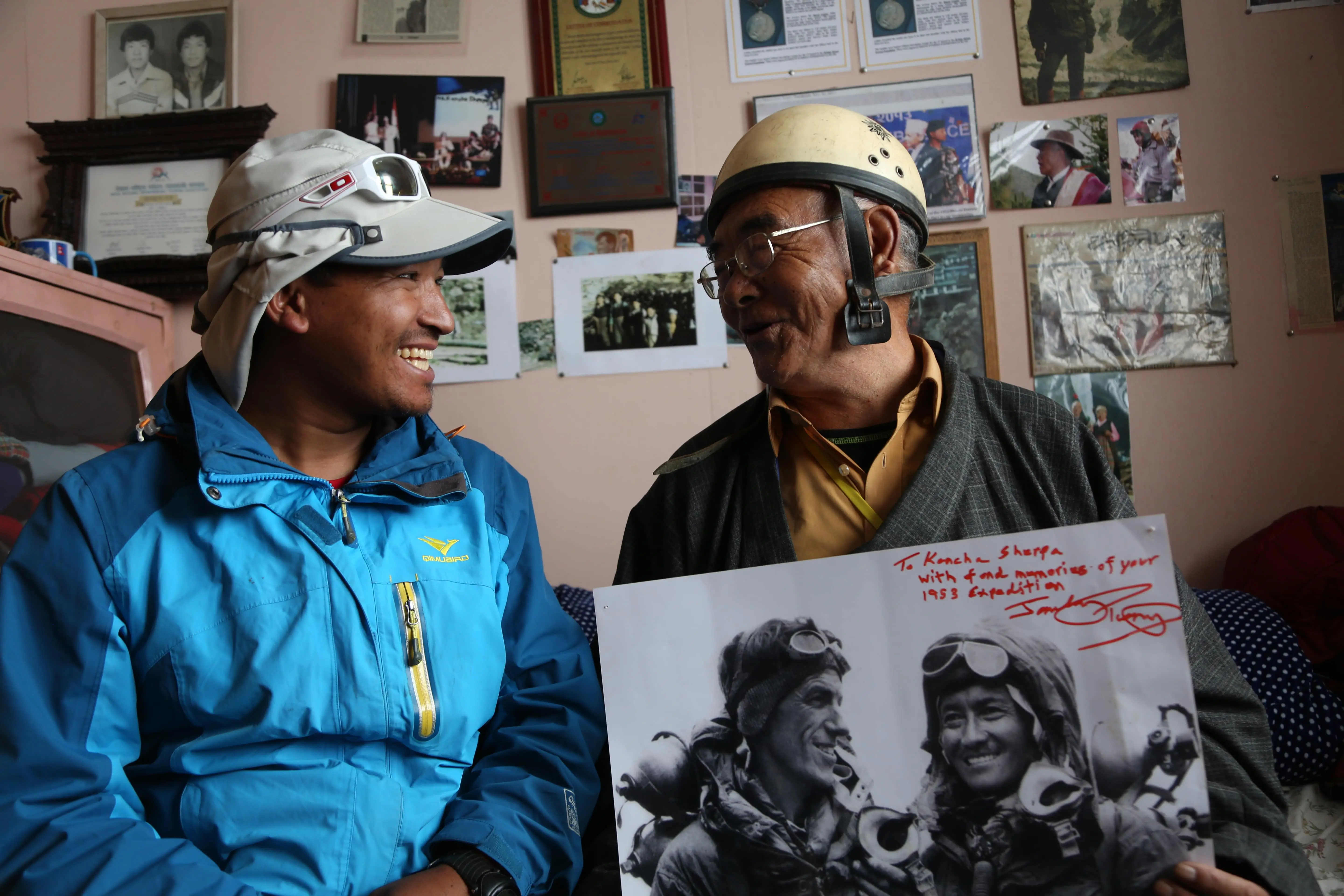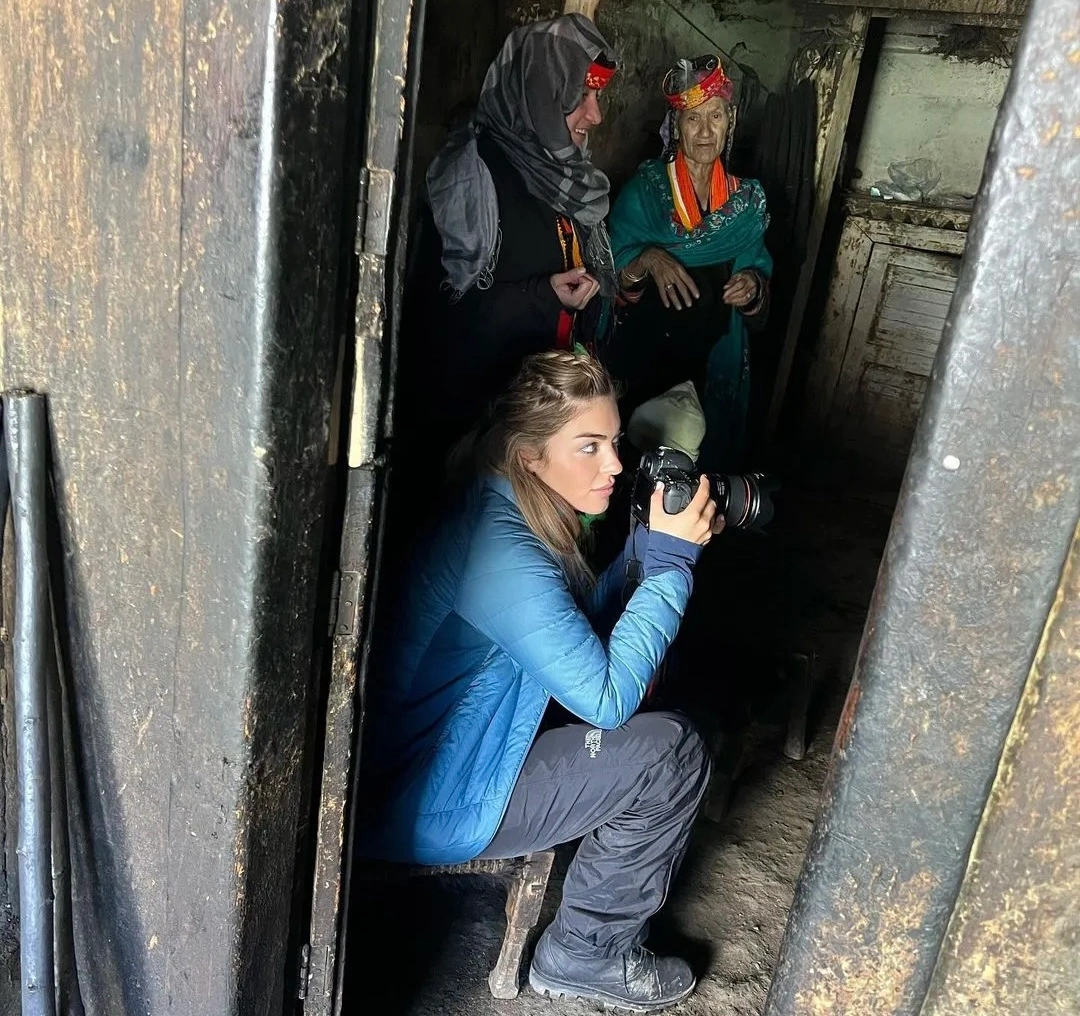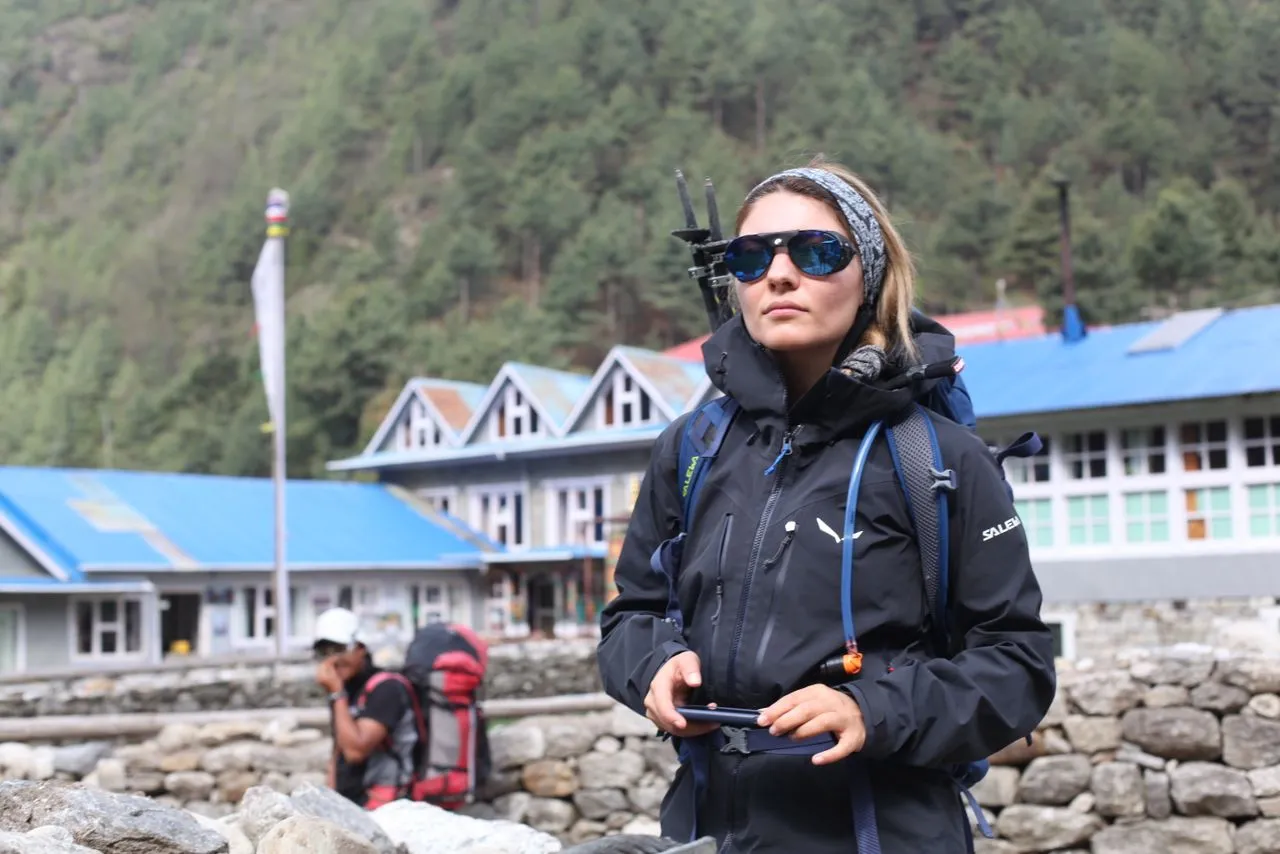I began my third trip to Nepal by visiting Kancha Sherpa; the last surviving member of Edmund Hillary’s team, the first conqueror of Everest. Before my first trip, I had heard some things about the Sherpas.
It seemed to me that Sherpa was a profession; those who helps climbers on their ascent. I expected everything but to see men with baskets twice their height, naturally carrying mountaineering gear. They stride ahead, having traversed this path so many times that they know the road and all its dangers by heart, regularly warning climbers about how to overcome these challenges. As conversations progressed, amidst that pristine whiteness, that astonishing purity of rock and ice, I saw what darkness lay hidden within.
Kansa Sherpa welcomed us easily, with an open face characteristic of most Nepalis. The walls of his house were adorned with photographs from the historic ascent of the first conquest of Mount Everest.
His home served as a small museum of primitive mountaineering artifacts and the climbs he had accomplished over half a century. Kansa Sherpa’s ascent had been halted at the second-to-last camp by the group leader’s orders, while Edmund Hillary and Tenzing Norgay had reached the summit. For years, the name of Sherpas, alongside Hillary, has not been prominent in mountaineering history. Following campaigns regarding the wages of Sherpas against tourist service companies, the discussion about registering Sherpas’ names in ascents was raised, and they emerged from complete invisibility.
A Sherpa’s daily wage ranges between three and five dollars. If they work with tourist companies, they may receive even less than this amount. The rule is that their wages should comply with insurance laws; however, the rules of these insurances are so complicated that they usually receive negligible compensation after accidents, and after death, their families become involved in lengthy legal battles.
For this reason, Sherpas prefer to directly negotiate with climbers on smaller ascents, who generally offer higher wages. They invite climbers to their homes for sleep and food, from which they also earn income. However, every time I encountered a Sherpa, I was treated as a guest in their home, and sometimes they reluctantly accepted payment for food.
During my third climb, up to Base Camp, I met a Sherpa named Golden. This Nepali climber was always reciting prayers, and the path was sacred to him. Throughout the route, there were stones inscribed with prayers. During breaks, I conversed with him. Golden Sherpa did not complain about wages or the situation of Sherpas. He saw himself as part of the mountain’s life cycle in a monk-like manner. He viewed life and death in the mountains as a gift.

Returning alive from each ascent was another opportunity given to him, although he also understood the oppressive poverty and exploitation of Sherpas. Sherpas in the mountains fall into two categories: those who seek to make their voices heard against these injustices to the rest of the world, and those who consider death in the mountains honorable. Golden Sherpa’s memory was clouded by the fact that the bodies of deceased climbers were marked along the route to be delivered to their families when the ice melted in the spring, but Sherpa bodies were often thrown into ravines.
Climbing groups often don’t even feel obligated to provide a detailed report of a Sherpa’s death to their family.Sometimes, Sherpas must pass through temporary bridges constructed for crossing valleys as part of efficiency tests. Many Sherpas lose their lives in these experiments. Was there any other way? Golden Sherpa was not informed. When I returned, I inquired in Kathmandu. I was puzzled and bewildered. The answers were evasive. Sherpas showed no interest in discussing it. I felt a kind of fear in this indifference.
On my next trip, I talked with a Dutch climber. Our conversation started with Lakpa Sherpa, a Sherpa woman who had nine ascents to Mount Everest on her record. How have women been excluded from this male-dominated barrier? As the conversation progressed, we reached the topic of temporary bridges. It had a simple answer: due to the variable conditions of the mountains, one cannot always rely on mathematical calculations. However, by involving engineering teams and transporting advanced equipment, many of these deaths could be prevented.
These were expenses that tourist service companies balked at because they had cheaper solutions. I remembered an article with the title “Sherpas, Disposable Men” or “Disposable Men!” I can’t recall the exact English phrase, but the horrifying truth had been revealed to me.




